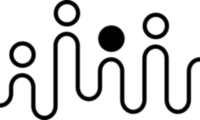When Timothy Gallwey realized in the 1970s that his ‘Inner Game’ approach to coaching tennis was applicable beyond the tennis court, I’m sure he couldn’t have imagined that 50 years later a whole industry would have sprung up around coaching for business people.
John Whitmore and Gallwey were running tennis programmes when a player, who was also an IBM executive, invited them to teach leaders at IBM how to manage using coaching techniques .
They were the earliest pioneers of executive or business coaching, and there is a straight line between their approach to coaching and what I learned from David Lane and Mike van Oudtshoorn on the Middlesex MA coaching programme in 2002.
My thesis on using scenario planning for coaching was supported by Clem Sunter and opened up a field of work for me that blended executive coaching conversations with strategy work.
As powerful as those conversations were, over the years, I realised there was a missing third leg which related to the complex decision-making that executives need to make.
Core to the success of any business are the people, starting at the top of the organization. If everyone from the executives down knows exactly how growth will happen, and what their role is, then there is not much to talk about.
If, however, there are questions and decisions to be made about growth, competitors, focus, silos to break down, or people being more specifically aligned, then having a coach to provide perspective and work with, together, to figure out these complex decisions is as relevant as having a coach to work on your tennis serve and volley.
As Eric Schmidt says, “all the best people have coaches.”
A large part of my conversations with executives is about the complex decisions they have to make as leaders. I hope this isn’t hard to hear, but all of us humans are not very good at complex decisions.
We can compare the decisions that executives need to make with the decisions professional investors make about buying or selling a stock. Both require weighing up numerous inputs and both can only be measured financially sometime after the decision.
The data on the professionals who make stock investments is widely available and shows that, for the 10 years to 2020, the professional managers performed worse than their index .
This means that by actively making buy and sell decisions, these managers, who have spent years honing their skills, did worse than simply buying the index – or the average of all the stocks they were deciding on.
Many books have been written on why this is, but nobody has documented it quite as well as the king of human error Daniel Kahneman in Thinking Fast and Slow .
Anybody reading the book comes away feeling significantly more fallible in their decision-making ability. His hundreds of examples of how we over-estimate and under-estimate, or just get it completely wrong, are truly disarming.
One of Kahneman’s references is Philip Tetlock’s work on expert decision makers in which he shows that experts, people who are paid for their opinion, are generally no better at predicting than you and I.
So, our executives are up against some pretty formidable forces when it comes to decision-making.
Nobel prize winner Kahneman’s field of decision making has touched many parts of behavioural economics, and it is the area of fellow Nobel laureate Richard Thaler, whose work on nudges, offers useful approaches for how we can overcome our tendency to be biased and make poor decisions in complex situations.
‘Nudge Theory’ presents choices in a particular way which guides people towards an ideally beneficial outcome, without limiting their choices or specifically offering an incentive. As Thaler says, putting fruit at eye level counts as a nudge, banning junk food does not.
You may have heard of the studies about organ donors. These show that there are more donors in countries where it is the default to be an organ donor. Anyone can opt out, but the default, or nudge, pushes us towards the beneficial decision. Countries in which you have to actively work against the default and sign up as a donor on your own volition, have much lower rates of organ donors.
Nudges happen within a choice architecture which is a fancy way of describing the context of a decision or a choice.
Moving back to our executives and their teams making strategy decisions, what interested me was how we can set up the context for strategic decisions (the choice architecture) that can move a whole organisation in a beneficial direction.
Strategy starts with a decision on how we will compete and win in the marketplace. This needs to be broken down into the pieces that can be executed across the executive team and then deep within company operations.
By framing all of these decisions in a way which is beneficial to company growth, we have the potential to literally nudge the organisation towards that growth, one decision at a time.
And this is the third, big influence on my strategy coaching.
Working with a CEO or executive team, using the same coaching techniques going all the way back to Gallwey and Whitmore, we can identify the strategy decisions to be made, structure them in a choice architecture, and then provide an environment where every person in the organisation is making decisions in support of the desired company growth.
Along the way, there is lots of opportunity for the executive being coached to learn about themselves, their decision-making ability, and benefit from ‘live’ feedback on how they lead.
